Loading
Journal of Clinical Haematology
ISSN: 2766-4686
All Articles
Weibel-Palade Bodies-Presumed Role in Clinical Phase of STEC-HUS
Leo Monnens
In Thrombotic thrombocytopenic purpura ADAMTS-13 (a disintegrin and metalloproteinase with a thrombospondin type 1 motif, member 13) activity is deficient and microangiopathy occurs after a second trigger. In Shiga toxin producing Escherichia coli (STEC-HUS) stimulated release of Weibel-Palade bodies (WBP’s) is presumed to be the first hit in damaging Gb3 positive endothelial cells in the diarrhea phase. The objective role of the release of WBP’s components after admission of the patients is not adequately evaluated. Different mechanisms involved in the pathogenesis are discussed and approaches for treatment proposed.
J Clin Haematol, 2024, Volume Volume 5, Issue Issue 1 | DOI: 10.33696/haematology.5.060
Hematological Profiles of Newly Diagnosed Hiv Patients Initiated on Dolutegravir-based Therapy at the University of Nigeria Teaching Hospital, Enugu
Chima Okpo Onwuka-Kalu, Ejike Felix Chukwurah, Boniface Nwofoke Ukwah, Victor U Usanga, Samuel Kwasi Appiah, Charles Nkansah
Dolutegravir (DTG), an integrase strand transfer inhibitor, is increasingly adopted as the preferred first-line antiretroviral therapy (ART) due to its potent virological efficacy and high barrier to resistance. However, emerging safety concerns—such as reports of neural tube defects, neuropsychiatric symptoms, and hematological abnormalities including sideroblastic anemia—have raised important questions regarding its long-term safety profile.
J Clin Haematol, Volume 6, Issue 1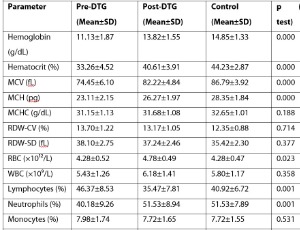
Treatment of Traumatic Brain Injury: Nanotherapeutics
Rajiv Kumar
Nanotechnology and regenerative nanotherapeutics enrich the renewing features and function of the diseased cells and tissue by replenishing the local environment, while inhibiting further degeneration. These featured therapeutics perform cell maintenance and promote cellular events to develop better communication between re-forming molecules of remedies and the brain.
J Clin Haematol, 2024, Volume Volume 5, Issue Issue 1, p1-3 | DOI: 10.33696/haematology.5.056
Isolated Kidney Infarct and Lupus Anticoagulant Positivity in a Young Patient with Mild SARS-CoV-2 Infection
Jayesh Mittal, Amreetpal Sidhu, Preeti G. Misra, Gaurav Vashishta
The incidence of thromboembolic events in COVID-19 is reportedly higher in intensive care unit (ICU) patients (29.4%) as compared to non-ICU patients (11.5%), while data on thromboembolic events in non-hospitalized, self-limiting COVID-19 is unavailable. Renal infarction with COVID-19 has only been reported in three patients who had severe infection, multiple comorbidities, and/or immuno-compromised state post kidney transplantation. Since the onset of the SARS-CoV-2 pandemic, guidelines for the prophylaxis and treatment of COVID- 19-related hypercoagulability have only been focused on hospitalized patients. Concurrently, risk factors and management guidelines for thromboembolic events in mild COVID-19 have remained unidentified. In this report, we describe a case of a 38-year-old male–with no medical history pertinent to hypercoagulability–who developed an isolated renal infarction one week after being diagnosed with mild COVID-19.
J Clin Haematol, 2021, Volume Volume 2, Issue Issue 1, p1-4 | DOI: 10.33696/haematology.2.021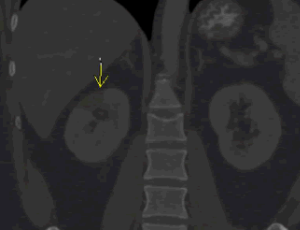
Targeting Amino Acids to Treat AML
Xuan Zhou, Bei Cao, Juan Li
Acute myeloid leukemia (AML), a life-threatening disease, is a malignant disorder of the bone marrow characterized by the clonal expansion and differentiation arrest of myeloid progenitor cells. It is a highly heterogeneous disease and shows differential prognosis ranging from death within a few days of beginning treatment to complete remission. Systems biology approaches such as genomics and proteomics have already greatly facilitated the leukemia typing and prognosis stratification, which boosted the personalized medicine. However, the actual clinical outcome of patients is not always inconsistent with the current AML-stratification system. Moreover, AML subtypes especially relapse or refractory AML.
J Clin Haematol, 2020, Volume Volume 1, Issue Issue 1, p1-6 | DOI: 10.33696/haematology.1.001
Diagnostic and Prognostic Challenges in Cytology for Multiple Myeloma: A Case Series in a Resource-limited Setting
Mame Ngone Coly, Mamadou Wague Guèye, Demba Makalou, Macoura Gadji, Alassane Diatta
Background: Multiple myeloma (MM) is a malignancy of plasma cells characterized by clonal proliferation in the bone marrow and associated organ damage. In resource-limited settings, advanced diagnostic tools are often inaccessible, making conventional cytology a critical first-line diagnostic approach. Objectives: To assess the advantages and limitations of using bone marrow cytology as the primary diagnostic method for MM in a resource-constrained environment.
J Clin Haematol, 2025, Volume Volume 6, Issue Issue 1, p1-6 | DOI: 10.33696/haematology.6.062
Commentary on "The FLAMSA Concept Past and Future"
H.J. Kolb, B. Pinto Simoes, C. Schmid
The FLAMSA concept was designed as a conditioning regimen for acute leukemia separating leukemia therapy from reduced intensity conditioning. Leukemia treatment consists of a short and intensive chemotherapy followed after a 3-day rest by conditioning with intensive immune suppression and reduced intensity of myeloablative (stem cell toxic) treatment preferably total body irradiation (TBI).
J Clin Haematol, 2022, Volume Volume 3, Issue Issue 1, p1-8 | DOI: 10.33696/haematology.3.041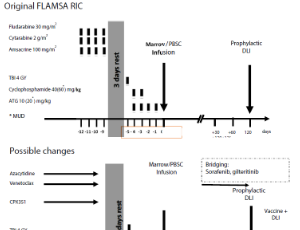
Thrombotic Events and Risk Factors for Thrombosis in Polycythemia in Senegal, West Africa
Moussa Seck, Elimane Seydi Bousso, Sokhna Aissatou Touré, Abibatou Sall, Maryama Ndao, Sérigne Mourtalla Guèye, Blaise Félix Faye, Alioune Badara Diallo, Mohamed Keita, Awa Oumar Touré, Saliou Diop
Objectives: We aim to identify thrombotic events and risk factors for thrombosis (RFT) comparing polycythemia vera (PV) and secondary polycythemia (SP) patients. Methods: We carried out a retrospective study of a cohort of 59 patients with PV (n=34) and SP (n=25) followed for a period of 14 years. Variables studied were the frequency and type of thrombosis, sociodemographic, clinical, and biological RFT. Statistical analysis was performed using SPSS software version 18. Multivariate analysis was performed to identify RFT.
J Clin Haematol, 2023, Volume Volume 4, Issue Issue 1, p1-8 | DOI: 10.33696/haematology.4.052
Voting Engagement among Adults with Sickle Cell Disease (SCD): Health Matters
Jessica Miller, Camela S. Barker, Mary Wood, Brianna Jones, Tierra Arnold, Birchie Warren, Samanta Beavers, Erika N. Cubilete, Raven Brooks, Oneika Thompson, Jazmin Rosales, Alyssa Delts-Robinson, Serenia Fulcher, Montavia M. Brooks, Cypress Booker, Rani Haddock, Malik Muhammad, Elaine Whitworth, William Jeff Bryson, Wandy Morel Cubilete, Elaine O’Neal, Recardo T. Kersey, Sarah Reives, John J. Sollers, III, Jasmine Benner, Goldie S. Byrd, Tanisha Burford, Brenda Howerton, George Cliette, Zack Forde-Hawkins, Courtney Munroe, Jr., Dana Jones, Jonathan Livingston, Shiv Sudhakar, John Sollers, IV, Grace Donahue, Candice Alick, Debra O. Parker, Richard Boorzt-Marx, Christopher L. Edwards
The Voting Rights Act of 1965 was established to enforce voting rights guaranteed by the Fourteenth and Fifteenth amendments. Unfortunately, Blacks faced additional barriers when attempting to exercise their right to vote. Moreover, focusing on voting specifically among adults living with Sickle Cell Disease (SCD), we assessed voter participation as a form of advocacy to evaluate if political involvement was related to psychological status.
J Clin Haematol, 2024, Volume Volume 5, Issue Issue 1, p4-11 | DOI: 10.33696/haematology.5.057
Lower 24-Month Relative Survival among Black Patients with Non- Hodgkin’s Lymphoma: An Analysis of the SEER Data 1997-2015
Maria Jacqueline Nieto, Zhen Li, Hasan Rehman, Muhammad Wasif Saif
Recent progress in the therapies used for patients with Non- Hodgkin’s lymphoma (NHL) has improved survival. In 2020, 77,240 people were diagnosed with NHL. Although it accounts for 4% of all cancers, the incidence has been reported to be decreasing in the last few years. About 26% of people will expire from NHL (15% males and 11% females).Non-Hodgkin lymphoma arises from the clonal expansion of B, T, and natural killer (NK) cells. There is a significant degree of heterogeneity in NHL and this is likely related to different degrees of differentiation and maturation of these cells. These hematological malignancies exhibit different tumor behavior and are responsive to different chemotherapy agents which impacts clinical outcomes. There are patients who can be cured with current regimens; however, subtypes such as indolent and some aggressive lymphomas remain incurable necessitating treatment with new therapies including immunotherapy, targeted therapy, CAR T cells, and hematopoietic stem cell transplant.
J Clin Haematol, 2021, Volume Volume 2, Issue Issue 1, p5-13 | DOI: 10.33696/haematology.2.022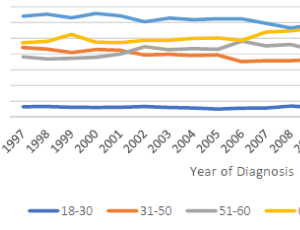
New N-ribosides and N-mannosides of Rhodamine Derivatives for Suppressing Leukemia Cell Line Growth
A. I. Khodair, M. K. Awad, J. P. Gesson, Y. A. M. M. Elshaier
Leukemia is a tumor of the primary blood-forming cells. leukemia is not only a cancer of the white blood cells but also it originates in other blood cell types. Types of leukemia are categorized based on the rate of growth to acute (fastgrowing) or chronic (slower growing), and whether it arises in myeloid cells or lymphoid cells. Different types of leukemia have a different line of treatment and prognosis.
J Clin Haematol, 2020, Volume Volume 1, Issue Issue 1, p7-9 | DOI: 10.33696/haematology.1.002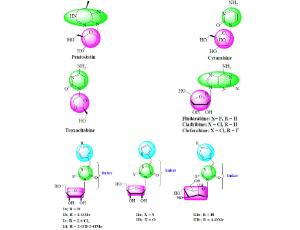
Lymphoid Blast Crisis in Chronic Myeloid Leukemia: Transformation to B cell Acute Lymphoblastic Leukemia
Machrani Febriastry, Laila Miftakhul Jannah, Johanda Damanik
Background: Chronic myeloid leukemia (CML) is driven by the BCR-ABL1 fusion oncoprotein and is usually controllable with first- and second-generation tyrosine-kinase inhibitors (TKIs). However, ~5–7 % of patients eventually develop blast crisis, and a minority of these transform to B cell acute lymphoblastic leukemia (ALL-B), a biologically aggressive state with a median overall survival of only 6–12 months despite therapy.
J Clin Haematol, 2025, Volume Volume 6, Issue Issue 1, p7-11 | DOI: 10.33696/haematology.6.063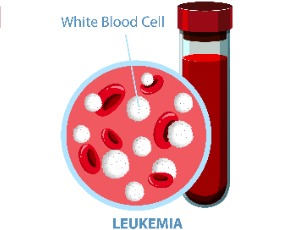
Phlebotomy in Congenital Erythrocytosis and in Sickle Cell Disease HbSC
Epifania Rita Testa, Adriana Masotti, Patrizia Valeri, Luciana Geremia, Valeria Brunetta, Rosalinda Testa, Francesco Angelo Zanolli, Andrea Bontadini
The inherited haemoglobin disorders, including thalassemias and haemoglobinopathies, are the most common genetic diseases and the clinical laboratory is essential in the diagnosis. Haemoglobinopathies are monogenic disorders in the genes that encode globin chains that can lead to a defective globin production or a variant in the haemoglobin structure.
J Clin Haematol, 2022, Volume Volume 3, Issue Issue 1, p9-11 | DOI: 10.33696/haematology.3.042
A Rare Blood Malignancy in a Genetic Hematological Disorder: Polycythemia Vera (PV) in Sickle Cell Disease (SCD)
Christopher L. Edwards, Sharena Scott, Michaela Boggan, Jordan Meek, William Jeff Bryson, Alexandria McDougald, Milo Broadnax, Camela S. Barker, Jessica Miller, John J. Sollers, III, Tanisha Burford, Jonathan Livingston, Elaine Whitworth, Goldie S. Byrd, Kelvin L. Williams, Sherry Eaton, Malik Muhammad, George Cliette, Dana Jones, Brianna Downey, Hilary T. Dietahin, Merrell Turner, Roland Thorpe, Keith Whitfield, Debra O. Parker, Elwood Robinson, Mary Wood, Kenyon Railey, Shiv Sudhakar, Wandy Morel Cubilete, Nirmish Shah
To delineate the etiology, symptomatology, and treatment of Polycythemia Vera in adults with Sickle Cell Disease. The current review contains a review of the 4 case reports that we found on the topic. To our knowledge, no other case reports exist.
J Clin Haematol, 2023, Volume Volume 4, Issue Issue 1, p9-19 | DOI: 10.33696/haematology.4.053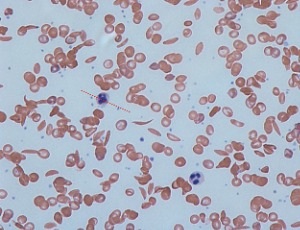
Lack of Prognostic Significance of Pretreatment Total Metabolic Tumor Volume on Event-free Survival at 24 Months in Diffuse Large B-cell Lymphoma
Mayur Narkhede, Sadaf Qureshi, Dhruti Diwan, Juarez Roxanna, Guiseppe Esposito
Diffuse large B-cell lymphoma (DLBCL) is a heterogeneous disease with variable outcomes. The majority of patients benefit from chemo-immunotherapy; however, 30 to 40% relapse after first-line treatment, and 10% are refractory to first-line treatment. This variability in outcome has led to the identification of prognostic factors to stratify patients based on their risk of relapse. The five-factor international prognostic index (IPI) was formulated for such risk stratification more than 20 years ago, based on clinical information obtained from patients with aggressive lymphomas treated with cyclophosphamide, doxorubicin, vincristine, and prednisone (CHOP)-like chemotherapy. The addition of rituximab to CHOP chemotherapy led to improved outcomes, diminishing the discriminatory capacity of IPI amongst risk groups. Efforts to enhance the prognostic model by adding or defining new factors have only led to minor improvements without the ability to identify patients at risk of an inferior outcome.
J Clin Haematol, 2020, Volume Volume 1, Issue Issue 1, p10-15 | DOI: 10.33696/haematology.1.003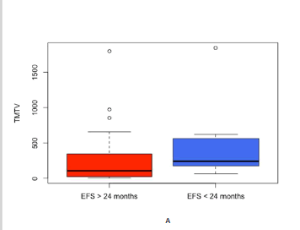
The Effect of Food on the Pharmacokinetics of Unesbulin in Patients with Advanced Leiomyosarcoma
Lan Gao, Katsuyuki Murase, Diksha Kaushik, Nageswara Reddy, Brian A. Van Tine, Steven Attia, Dhiren D'Silva, Ronald Kong
Unesbulin is an orally bioavailable small molecule binding to the colchicine-binding site of tubulin and impeding tubulin polymerization and microtubule formation. It has been investigated as a monotherapy and in combination with other medications for the treatment of cancer, including leiomyosarcoma. This study investigated the effect of food on the pharmacokinetics of unesbulin. In total, eight leiomyosarcoma (LMS) patients (four males and four females) were enrolled in the food effect study during the phase 1b clinical study (NCT03761095).
J Clin Haematol, 2025, Volume Volume 6, Issue Issue 1, p12-16 | DOI: 10.33696/haematology.6.064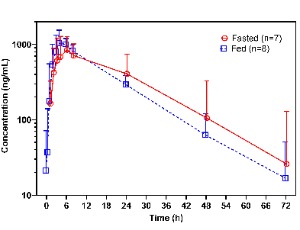
Long-term Intraperitoneal Chemotherapy for Malignant Peritoneal Mesothelioma
Paul H. Sugarbaker
In the United States malignant peritoneal mesothelioma (MPM) is a rare disease with approximately 300 new cases each year. The malignancy progresses within the peritoneal space throughout its natural history so that a majority of patients die as a result of massive disease within the abdomen and pelvis. Persistence and then progression of mesothelioma occurs despite extensive surgical procedures to eradicate the disease.
J Clin Haematol, 2022, Volume Volume 3, Issue Issue 1, p12-23 | DOI: 10.33696/haematology.3.043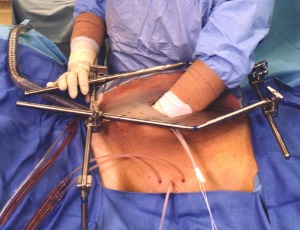
Toward Precision Medicine for Patients with Multiple Myeloma
Rina Kansal
Multiple myeloma (MM), the second most common hematologic malignancy, is a plasma cell neoplasm that arises from a precursor, monoclonal gammopathy of undetermined significance (MGUS), which may or may not be previously diagnosed. Smoldering multiple myeloma (SMM), another precursor of MM, lacks myeloma-defining events and end-organ damage that are diagnostic of MM in the appropriate clinical settings. Newly diagnosed MM (NDMM) is highly heterogeneous genetically and clinically with very variable survival outcomes ranging from a few months to over a decade.
J Clin Haematol, 2024, Volume Volume 5, Issue Issue 1, p12-33 | DOI: 10.33696/haematology.5.058
Impact of Early COVID-19 Advice and Guidelines on the Blood Supply in Low- and Middle-Income Countries
Cees Th. Smit Sibinga, Nabajyoti Choudhury, Ankit Mathur
In March 2020, the Asian Association of Transfusion Medicine (AATM) took the initiative to support and guide the 20 member and 5 associate-member countries in their efforts to continue their blood supply with minimal interruption or shortages during the pandemic. Within two weeks, they published a guideline and an instructive Aide Mémoire, which were also communicated with the major international blood transfusion organizations, WHO and the EU. This was echoed by a rapid appearance of national and international guidance documents.
J Clin Haematol, 2021, Volume Volume 2, Issue Issue 1, p14-17 | DOI: 10.33696/haematology.2.023
Effectiveness of Parenteral Iron Therapy in the Real-world Setting: A Retrospective Analysis
Chris LaVallee, Patrick Cronin, Isha Bansal, Winghan Jacqueline Kwong, Ralph V.Boccia
Iron deficiency anemia (IDA) is caused by an insufficient iron supply for erythropoiesis that leads to a reduction in hemoglobin (Hgb) and circulating red blood cells. Iron deficiency is the most common cause of anemia in the United States (US) and occurs most often from blood loss and in patients with chronic diseases and inflammation. It was estimated that approximately 10 million people are iron deficient in the US, including 5 million who have IDA.
J Clin Haematol, 2020, Volume Volume 1, Issue Issue 1, p16-25 | DOI: 10.33696/haematology.1.004
How to Provide a Sufficient Supply of Safe, Effective and Quality-assured Blood and Blood Components in Emergency Situations
Cees Th. Smit Sibinga
Background: Emergency situations can be personal and medical but also external and humanitarian (armed conflicts). In each situation a preparedness plan consisting of a risk assessment and gap analysis, emergency preparedness protocol, response and recovery protocol are needed. Objective: To discuss the question “how to provide a sufficient supply of safe, effective and quality blood and blood components in emergency situations?’”
J Clin Haematol, 2025, Volume Volume 6, Issue Issue 1, p17-27 | DOI: 10.33696/haematology.6.065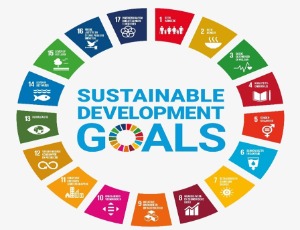
The Association of PRKRAP1 Pseudogene with Acute Lymphoblastic Leukemia Risk
Yavuz C, Oguz FS, Cinar CK, Ciftci HS, Kivanc D, Karakas Z, Dorak MT
Acute lymphoblastic leukemia (ALL) is the deterioration of the maturation period of lymphoblasts, and the uncontrolled excessive reproduction of the abnormal cells. In addition to gene rearrangements, chromosome number abormalities (Down syndrome, etc.), and genetic locations, being male, Caucasian ethnicity, having a sibling diagnosed with leukemia, exposure to radiation, having received chemotherapy or radiotherapy, and exposure to some toxins and chemical substances such as benzene may be counted as the ALL risk factors.
J Clin Haematol, 2021, Volume Volume 2, Issue Issue 1, p18-23 | DOI: 10.33696/haematology.2.024
Molecular Features Associated with Response to Enasidenib Plus Azacitidine in Newly Diagnosed IDH2-Mutated Acute Myeloid Leukemia
Alberto Risueño, Wendy L. See, Thomas Prebet, Courtney DiNardo, Hartmut Döhner, Eytan M. Stein, Amir T. Fathi, Paresh Vyas, Lynn Quek, Anita Gandhi, Maroof Hasan
IDH2 gene mutations, typically at residues R140 and R172, occur in 8–19% of patients with acute myeloid leukemia (AML). These mutations induce production of 2-hydroxyglutarate (2-HG), an oncometabolite that causes DNA and histone hypermethylation, and subsequent blockade of hematopoietic cell differentiation.
J Clin Haematol, 2023, Volume Volume 4, Issue Issue 1, p20-34 | DOI: 10.33696/haematology.4.054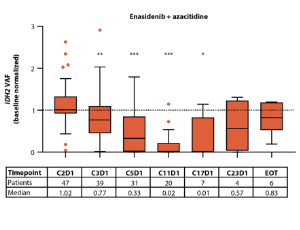
- Abstract |
- Full Text |
- Cite |
- Supplementary File
Pre-operative Intravenous Iron to Optimise Patients Before Cardiac Surgery
N Patel, C R Evans
The World Health Organisation (WHO) defines anaemia as a haemoglobin (Hb) of less than 130 mg/mL in men and 120 mg/mL in non-pregnant women. Anaemia has a global prevalence of 25%. In patients presenting for surgery the prevalence can be as high as 40%. Anaemia can be acute or chronic; but becomes problematic when there are insufficient numbers of red blood cells to maintain physiological oxygen demand, the end result being compromised oxygen delivery.
J Clin Haematol, 2021, Volume Volume 2, Issue Issue 1, p24-35 | DOI: 10.33696/haematology.2.025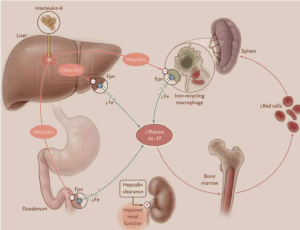
The Research Progress of Circular RNA in Multiple Myeloma
Dongjiao Wang, Fan Zhou
The circular RNA (circRNA) is a covalently closed noncoding RNA, recently with the widespread application of high-throughput RNA sequencing bioinformatics methods, a large number of circRNAs found in human cells have been gradually discovered. It performs multiple biological functions in the human body and participates in the occurrence and development of different diseases such as tumors. Studies have found that circRNA is not easily degraded by exonuclease RNase R, has a half-life of more than 48 hours, can stably exist in eukaryotic cells, and its structure is highly conservative and organized, timing, disease-specific, and is expected to become a potential tumor diagnostic marker and therapeutic target.
J Clin Haematol, 2020, Volume Volume 1, Issue Issue 1, p26-32 | DOI: 10.33696/haematology.1.005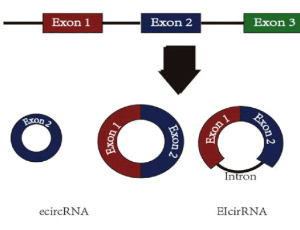
Postpartum Shock Following Vulvovaginal Haematoma, Rare but Keeps Coming: The Complete Case Report
Ekundayo O. Ayegbusi, Michael S. Archibong, Tolulope B. Adeyanju, Adewale T. Adeyiolu, Abdulhamid N.Gyadale, Oluwatoyin O. Fadare, Akaninyene E. Ubom, Anthonia T. Abe
Vulvovaginal haematoma following vagina delivery can cause a serious life-threatening complication including maternal mortality if not promptly diagnosed or properly managed yet, is no more commonly seen, especially in modern obstetric practice due to improvement in quality of care and management in labour with careful observation of mothers in labour ward following delivery.
J Clin Haematol, 2022, Volume Volume 3, Issue Issue 1, p28-32 | DOI: 10.33696/haematology.3.045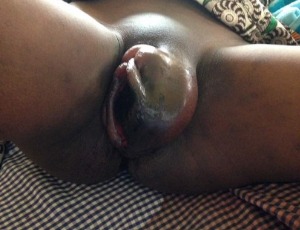
Reduced Intensity Therapy for Primary Central Nervous System Post-Transplant Lymphoproliferative Disorders is Associated with Preserved Survival Outcomes: A Twenty-Year Single-Institutional Experience
Bradley Uyemura, Zhanhai Li, David T. Yang, Michael J. Fallon, Jon S. Odorico, Kristin Bradley, Julie E. Chang
Primary central nervous system post-transplant lymphoproliferative disorders (PCNS-PTLD) are rare complications of transplantation. Due to PCNS-PTLD’s scarcity, optimal treatments, risk factors, and outcomes are poorly characterized. By retrospective analysis of 20 patients treated at the University of Wisconsin between the years 2000–2022, we aimed to describe patient/disease characteristics, therapies received, and survival outcomes of PCNS-PTLD. Three separate clinical and pathological databases were reviewed to identify cases, with all patients having at least 2 years of long-term follow-up.
J Clin Haematol, 2025, Volume Volume 6, Issue Issue 1, p28-37 | DOI: 10.33696/haematology.6.066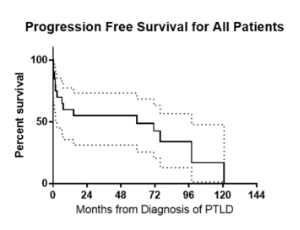
Making a Rationale Decision About -Uses of FFP: A Study at the Blood Bank of Tertiary Care Hospital of Southern Rajasthan
Diksha Rewal, Sanjay Prakash, Rajaram Sharma
Blood is a crucial part of life as there is no other alternative to the human body’s connective tissue. Blood is composed of blood cells suspended in plasma. Plasma, which constitutes 55% of body fluid, is mostly water (92% by volume) and contains proteins, glucose, mineral ions, hormones, carbon dioxide, urea, uric acid, oxygen, etc. (plasma being the primary medium for excretory product transportation). Plasma performs many essential functions within the body, like coagulation, supply of nutrients, removal of wastes
J Clin Haematol, 2022, Volume Volume 3, Issue Issue 2, p33-38 | DOI: 10.33696/haematology.3.046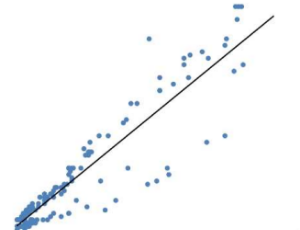
Toward Integrated Genomic Diagnosis in Routine Diagnostic Pathology by the World Health Organization Classification of Acute Myeloid Leukemia
Rina Kansal
Significant milestones and seminal discoveries during 1674-1966, by individuals who have made crucial contributions toward progress in the diagnosis of hematologic neoplasms as we understand today are depicted chronologically. It is notable that the path to progress in the understanding of disease and neoplasms initially took centuries for significant discoveries (17th-18th centuries), and subsequently, many decades (19th-20th centuries) for a breakthrough or a change from the prevailing norm.
J Clin Haematol, 2020, Volume Volume 1, Issue Issue 2, p33-53 | DOI: 10.33696/haematology.1.006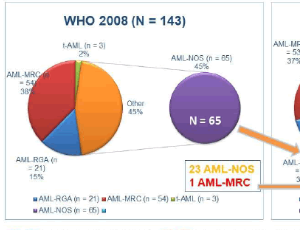
Decoding Hodgkin's Lymphoma: Advances in Biology, Diagnostics, and Therapeutic Strategies
Tamer A. Addissouky, Mohamed Nad Alawad
Background: Hodgkin's lymphoma (HL) is a malignancy of the lymphatic system characterized by Reed-Sternberg cells. While current treatments have improved outcomes, challenges remain in managing relapsed/refractory disease and mitigating long-term toxicities. Purpose: This review aims to summarize recent advances in HL biology, diagnostics, and treatment strategies, with a focus on novel therapeutic approaches and emerging research areas.
J Clin Haematol, 2024, Volume Volume 5, Issue Issue 1, p34-46 | DOI: 10.33696/haematology.5.059
Analysis of Updates in Multiple Myeloma Treatment and Management
Maria Jacqueline Nieto, Aryles Hedjar, Margaret Locke, Jessica Caro, Muhammad Wasif Saif
Introduction: During the past two decades, new therapeutic agents have greatly improved the treatment landscape in multiple myeloma (MM). Treatments such as proteasome inhibitors, immunomodulatory agents, targeted monoclonal antibody therapy, and chimeric antigen receptor (CAR) T-cell therapy have improved outcomes with less toxicity. Advances in laboratory testing have accompanied this change,
J Clin Haematol, 2023, Volume Volume 4, Issue Issue 1, p35-42 | DOI: 10.33696/haematology.4.055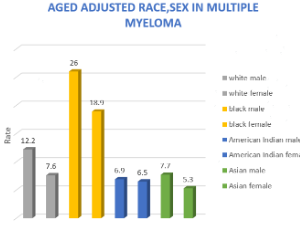
Chemotherapy Promotes Release of Exosomes Which Upregulate Cholesterol Synthesis and Chemoresistance in AML Blasts
Chang-Sook Hong, Michael Boyiadzis, Theresa L. Whiteside
Extracellular vesicles (EVs) are emerging as a key mediator of intercellular communication as well as a major mechanism of functional reprogramming of cells in disease. All cells produce EVs, which freely circulate and are found in all body fluids. EVs are heterogenous, consisting of subsets of vesicles with different sizes, distinct origins, and various functions (Figure 1). They mediate a broad variety of biological events ranging from cellular activation, inflammation, blood coagulation, angiogenesis, cellular transport, and others.
J Clin Haematol, 2021, Volume Volume 2, Issue Issue 2, p36-39 | DOI: 10.33696/haematology.2.026
Repurposing Nilotinib as a Selective P38β Inhibitor in Hematopoietic Malignancies: Clinical Evidence and Mechanistic Insights
Xu Hannah Zhang, Jack Hsiang, Sangkil Nam, Hongzhi Li, Yate-Ching Yuan, Xiwei Wu, Susan Hmwe, Roger Moore, Steven T. Rosen
Background: Cutaneous T cell lymphoma (CTCL) is an incurable cancer characterized by elevated p38β and p38γ and downregulated tumor-suppressive p38α. Objectives: We aimed to identify selective p38β inhibitors and investigate their mechanisms and therapeutic implications in hematologic malignancies. Methods: A high-throughput screen of Food and Drug Administration (FDA)-approved compounds was conducted to identify p38β inhibitors. In vitro kinase assays, Western blots, scRNA-seq, synergy tests, and mass spectrometry were used. Clinical trial and public datasets were analyzed.
J Clin Haematol, 2025, Volume Volume 6, Issue Issue 1, p38-55 | DOI: 10.33696/haematology.6.067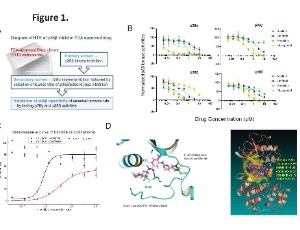
- Abstract |
- Full Text |
- Cite |
- Supplementary File
Targeting ANP32A Is a Novel Strategy Against Leukemia
Manman Wang, Zan Huang
Acute myeloid leukemia (AML) is a type of hematological malignancies that originate from hematopoietic stem/ progenitor cells in myeloid lineage. The genetic heterogeneity of AML causes varied responses to the existing treatment options, as well as drug resistance and refractory/ recurrent, posing a challenge to personalized precision medicine. Therefore, it is urgent to identify novel molecular targets, discover patient specific and disease specific risk factors, and explore effective combinations of modalities and drugs in the foreseeable future.
J Clin Haematol, 2022, Volume Volume 3, Issue Issue 2, p39-44 | DOI: 10.33696/haematology.3.047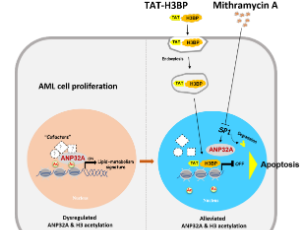
A Review of Testing Strategies for Bacterial Risk Control in Platelets Recommended by the FDA
Remo P. Vallejo, Paul D. Mintz
Platelet transfusion is associated with the risk of sepsis from bacterial contamination due to the need to store units at room temperature in oxygen-permeable bags. This risk associated with platelet transfusion is highest among all transfusable blood components. Measures applied in the past several decades have significantly reduced the occurrence of patient morbidity and mortality but have not eliminated it totally. Sampling of processed platelets for bacterial culture after 24 hours post-collection lowered the rate of infection but still allowed contaminated transfusions to occur due to low levels of bacteria being missed during sampling. Bacteria entering log phase growth after 24 hours may not be detected.
J Clin Haematol, 2021, Volume Volume 2, Issue Issue 2, p40-47 | DOI: 10.33696/haematology.2.027
B-cell Acute Lymphoblastic Leukemia with a Normal Platelet Count, Presenting as a Limp in a 2-year-old Child
P.M.A.S Senevirathna, K.D.J.M.K Galahitiyawa, D.M.N.K Dassanayake, N.K.K.S Thabrew
Limping in children is a common complaint made at pediatric, pediatric orthopedic and in emergency departments. It is defined as a deviation from the normal gait pattern expected for the child’s age. Especially in young children, the ambiguities in the signs and symptoms necessitate extensive investigations to enable a reliable medical assessment for the etiological dilemma of limping.
J Clin Haematol, 2022, Volume Volume 3, Issue Issue 2, p45-47 | DOI: 10.33696/haematology.3.048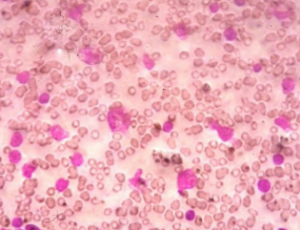
Multiple Myeloma with Neutrophilia: Two Etiologic Pathways for a Rare Presentation of a Common Diagnosis
Rachel Rose Hall, Christine MG Schammel, Jennifer Bell Knight
Multiple myeloma (MM) is a common hematologic malignancy, with 32,110 new cases diagnosed in the United States in 2019, resulting in 12,960 deaths. While neutrophilia
is also a common entity, it most often arises secondary to other etiologies, such as infection or inflammatory processes.
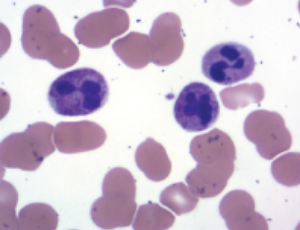
Flavopiridol (Alvocidib), a Cyclin-dependent Kinases (CDKs) Inhibitor, Found Synergy Effects with Niclosamide in Cutaneous T-cell Lymphoma
Xu Hannah Zhang, Jack Hsiang, Steven T. Rosen
Flavopiridol (FVP; alvocidib), an FDA-approved orphan drug, has been studied in clinical trials under both single treatment and combination scenarios; several singleagent Phase I and Phase II clinical trials against leukemia, lymphomas, and solid tumors are active. To date, there have been more than 50 clinical trials involving FVP in the United States. Unfortunately, almost half of patients on FVP clinical trials showed serious adverse effects, implicating appropriate dosages need to be found and an alternative way to circumvent the toxicity of FVP with synergistic agents.
J Clin Haematol, 2021, Volume Volume 2, Issue Issue 2, p48-61 | DOI: 10.33696/haematology.2.028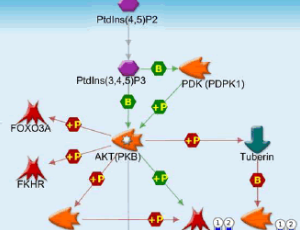
Commentary on “Dynamics of Erythrocyte Deformation Properties in Wistar Rats During Postnatal Ontogeny”
Katiukhin LN
This commentary will deal with the assessment of the aqueous permeability of biological membranes. Due to the hydrophobicity of the phospholipid bilayer, the membrane itself is not permeable to hydrophilic substances. However, the permeability of the natural biological membrane for small and electrically neutral water molecules is very high.
J Clin Haematol, 2022, Volume Volume 3, Issue Issue 1, p50-53 | DOI: 10.33696/haematology.3.044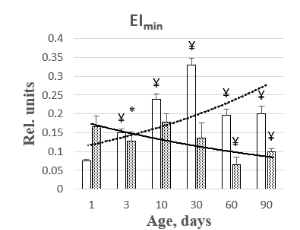
Comparison of Healthcare Resource Utilization, Cost of Care, and Health Outcomes Associated with Different Intravenous Iron Products in Heart Failure Patients with Iron Deficiency/Iron Deficiency Anemia: A Claims Database Analysis
Ye Wang, Jacob Beebe, Syed Numan
Iron deficiency (ID) and iron deficiency anemia (IDA) are highly prevalent in patients with heart failure (HF), with up to 50% of ambulatory patients with HF having ID. However, the actual proportion of patients with HF having ID potentially could be higher, as iron status is not always measured. ID, regardless of anemia, is an independent predictor of poor exercise capacity and reduced quality of life, resulting in worse survival among patients with HF.
J Clin Haematol, 2024, Volume Volume 5, Issue Issue 1, p52-61 | DOI: 10.33696/haematology.5.061
- Abstract |
- Full Text |
- Cite |
- Supplementary File
Management of Diagnostic and Treatment Centers in the Second Wave of COVID-19
Mahdieh Motie, Reza Dehnavieh, Khalil Kalavani
COVID-19 has challenged global health and affected many countries. The disease had infected more than 16 million people and killed over 650,000 ones by the end of July 2020. According to Sahu et al., COVID-19 epidemic is the third most common coronavirus in the 21st century, resulting in numerous deaths all over the world. It has caused severe psychological stress and increased hospital visits along with increased tiredness and burnout of medical staff. The disease has also raised many problems for the management of hospitals and diagnostic-treatment centers, so that many of them have no capacity to receive patients.
J Clin Haematol, 2020, Volume Volume 1, Issue Issue 2, p54-55 | DOI: 10.33696/haematology.1.007
What Do You Know So Far about the D-dimer Levels in COVID-19?
Miguel Augusto Martins Pereira, Lucas Lessa e Silva, Pedro Rio, Anna Julia Cunha
The Severe Acute Respiratory Syndrome, Coronavirus 2 (SARS-Cov-2), was first linked to cases of pneumonia of unknown cause in which they began to be reported in Wuhan, China. This represents a major threat to global health, and by the end of June, about 503 thousand deaths worldwide were found due to this disease. Coronaviruses are known for their great potential to cause systemic diseases, including changes in coagulation. Although it is still uncertain, studies point to the existence of a relationship between the severity of the case and the laboratory alterations that include the elevations in the levels of D-dimer and Von Willebrand Factor (vWF).
J Clin Haematol, 2020, Volume Volume 1, Issue Issue 2, p56-58 | DOI: 10.33696/haematology.1.008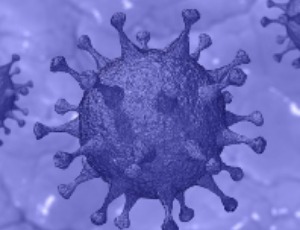
Mantle Cell Lymphoma and Hematopoietic Cell Transplantation in the Era of Cellular Therapy
James N Gerson, Stefan K Barta
Mantle cell lymphoma (MCL) is a rare subtype of non- Hodgkin Lymphoma (NHL) characterized by cyclin D1 translocations. Outcomes are heterogenous, but the disease is generally incurable. High-risk patients been shown to have a median overall survival (OS) of only 37 months and 20% five-year OS. In some patients, the disease is more indolent; such cases are associated with leukemic phase of the disease, SOX11-negativity, and mutated IGHV. Additionally, even across SOX11 positive cases outcomes vary, with worse overall survival in MCL with cytoplasmic staining as compared to nuclear staining. For patients with indolent clinical behavior, observation is frequently employed, and large case series suggest the possibility of prolonged periods before treatment becomes necessary, as long as 128 months, and favorable outcomes even once treatment has been initiated.
J Clin Haematol, 2020, Volume Volume 1, Issue Issue 2, p59-65 | DOI: 10.33696/haematology.1.009
Concomitant Langerhans Cell Histiocytosis and Chronic Myelomonocytic Leukaemia Responding to 5-azacitidine
Peter Brændstrup, Dennis Lund Hansen, Louise Kristensen, Henrik Frederiksen, Hanne E. H. Møller
Langerhans cell histiocytosis (LCH) is a rare, clonal, haematological disease of myeloid origin involving infiltration of neoplastic cells resembling Langerhans cells in various tissues. LCH cells express normal Langerhans cell markers such as CD1a, Langerin (CD207), and S100.
J Clin Haematol, 2022, Volume Volume 3, Issue Issue 2, p61-65 | DOI: 10.33696/haematology.3.050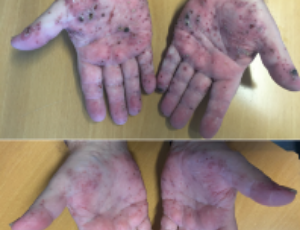
Physiology, Coagulation Cascade: Inherited Disorders, and the Molecular Phenomenon of Alterations in Hemostasis
Rajiv Kumar
The physiology of coagulation routes and paths is a cascade of several molecular phenomena and biological events which was classified into two categories based on their phenomena i.e., intrinsic and extrinsic, originated separately, consisting of various factors and features such as fibrinogen, prothrombin, plasma thromboplastin, Hageman factor, Christmas factor, and Stuart-Prower factor, participate in its physiology
J Clin Haematol, 2021, Volume Volume 2, Issue Issue 2, p62-64 | DOI: 10.33696/haematology.2.029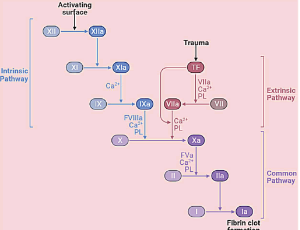
Prediction of Severity and Mortality in Acquired Thrombotic Thrombocytopenic Purpura (aTTP). Utility of Clinical-biological Scores
C. Pascual-Izquierdo, A. Domingo-González
Acquired thrombotic thrombocytopenic purpura (aTTP) is a life-threatening thrombotic microangiopathy (TMA). It has an average annual prevalence of approximately 10 cases/million people and an annual incidence between 1.5 and 6.0 cases per million according to studies conducted in France, the United States, the United Kingdom, and Spain. The first episode of aTTP occurs mostly during adulthood (~90% of all aTTP cases), but some child and adolescent forms are also detected (~10% of cases).
J Clin Haematol, 2021, Volume Volume 2, Issue Issue 2, p65-72 | DOI: 10.33696/haematology.2.030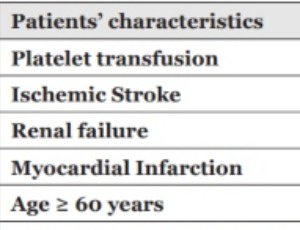
Needed, Assays for “Fetal Hemoglobin levels” in RBCs: Fetomaternal Hemorrhage and Expanded Applications in Sickle Cell Disease Management Could Forge an Evolution in Cellular Diagnostics
Bruce H. Davis
Treatment of sickle cell disease (SCD) remains varied with only a minority of patients benefiting from stem cell transplant as a near cure. Others await the promise of more effective and less toxic treatments than hydroxyurea, especially children who are most susceptible to the morbidities and mortalities of SCD. The recent report of Hebert, Rakotoson et al. points to an evolution of in vitro diagnostics (IVD) testing of blood cells with the emerging need for cell-by-cell measurement of red blood cell (RBC) specific hemoglobin variant levels. The study further provides clinical validation as to the utility of measuring HbF content in RBCs of SCD patients, not just as a prognostic test, but likely serving as a companion diagnostic in phase 3 clinical trials of new SCD therapies.
J Clin Haematol, 2020, Volume Volume 1, Issue Issue 2, p66-71 | DOI: 10.33696/haematology.1.010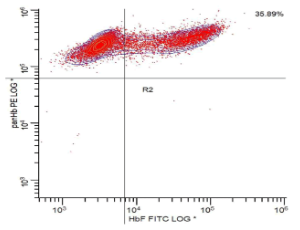
Safety and Tolerability of Nilotinib in Patients with Chronic Myeloid Leukemia during Routine Clinical Practice: Results from the ERASER Study from Greece
Argiris Symeonidis, Achilles Anagnostopoulos, Maria Ximeri, Georgia Kaiafa, Eleni Kapsali, Nora Athina Viniou, Theodoros Marinakis, Dimitrios Karakasis, Vasiliki Pappa, George Vassilopoulos, Dimitrios Margaritis, Maria Tabitsika, Maria Dimou
Chronic myeloid leukemia (CML) is characterized by the presence of Philadelphia chromosome (Ph+) in the majority of cases, and definitely by the presence of the hybrid BCR/ ABL1 proto-oncogene in all the patients. The BCR::ABL1 fusion gene encodes for an oncoprotein that has an activated tyrosine kinase domain in the ABL region and affects crucial cellular activities, such as increased proliferation, loss of stromal adhesion, and resistance to apoptosis, through enhanced tyrosine phosphorylation of various cellular substrates.
J Clin Haematol, 2022, Volume Volume 3, Issue Issue 2, p66-76 | DOI: 10.33696/haematology.3.051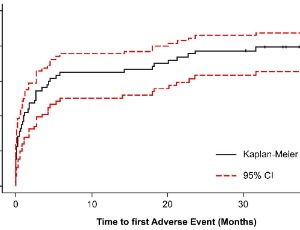
Anticancer Activity of S-Glycosylated Quinazoline Derivatives
Ahmed I. Khodair, Mona A. Alsafi
Breast cancer is the most frequent malignancy in females. Due to its major impact on the population, this disease represents a critical public health problem that requires further research at the molecular level to define its prognosis and specific treatment. Basic research is required to accomplish this task and this involves cell lines as they can be widely used in many aspects of laboratory research and, particularly, as in vitro models in cancer research. MCF-7 is a commonly used breast cancer cell line, that has been promoted for more than 40 years by multiple research groups but its characteristics have never been gathered in a consistent review article.
J Clin Haematol, 2020, Volume Volume 1, Issue Issue 3, p72-77 | DOI: 10.33696/haematology.1.011
Functional Precision Profiling: The Way Forward for Personalized Medicine
Lyndsey Flanagan, Siobhan Glavey, Triona Ní Chonghaile
Multiple Myeloma (MM) is a malignancy of the antibodyproducing plasma cells found in the bone marrow. In recent years, we have witnessed significant improvements made in both the diagnostic criteria and novel therapies for MM, resulting in the prolonged survival of MM patients. Approved novel therapies include proteasome inhibitors (bortezomib and carfilzomib), immunomodulatory drugs (thalidomide, lenalidomide & pomalidomide), monoclonal antibodies (daratumumab, elotuzumab & isatuximab) and B-cell maturation antigens (Belantamab). Recently, CAR T cell therapy has been FDA approved for MM treatment. Despite these advancements, MM remains an incurable cancer with suboptimal overall survival, with many patients developing relapsed/refractory MM. Plasma cell leukemia (PCL) is a rare and aggressive variant of MM. PCL is classified as either primary PCL, which develops de novo, or secondary PCL, that can arise in the late and advanced stages of MM.
J Clin Haematol, 2021, Volume Volume 2, Issue Issue 3, p73-79 | DOI: 10.33696/haematology.2.031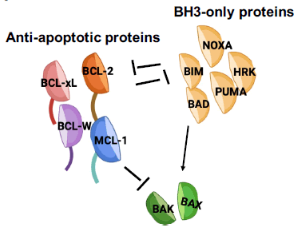
Choosing an Initial Therapy Regimen for Newly Diagnosed Multiple Myeloma
Margaret Locke, Adit Singhal, Manoj Ravichandran, Maria J Nieto
Treatment options for multiple myeloma (MM) have evolved significantly over the past four decades, improving overall survival (OS) through a deeper understanding of tumor biology and personalized treatment strategies. Key factors for individualizing therapy include eligibility for autologous stem cell transplantation (ASCT), disease risk stratification, patient frailty, performance status, age, and comorbidities, aiming to maximize disease control while minimizing toxicity.
J Clin Haematol, Volume 6, Issue 1, p75-82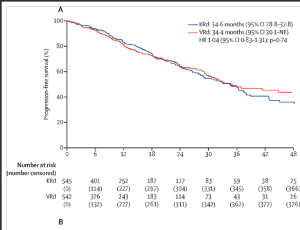
When Should Transplant Physicians Think about Familial Blood Cancers?
Lucy A. Godley
A 56-year-old Caucasian man was referred to an academic medical center for consideration of allogeneic hematopoietic stem cell transplantation (HSCT). One year earlier, he had seen his primary care physician for increased fatigue and decreased exercise tolerance, and a complete blood cell count showed a total white blood cell count of 2500/μL, hemoglobin of 7.2g/dL, and a platelet count of 110,000/μL. The white blood cell differential showed an absolute neutrophil count of 900/μL. The patient was referred to a hematologist who performed a bone marrow biopsy that showed a myelodysplastic syndrome with del(5q).
J Clin Haematol, 2020, Volume Volume 1, Issue Issue 3, p78-84 | DOI: 10.33696/haematology.1.012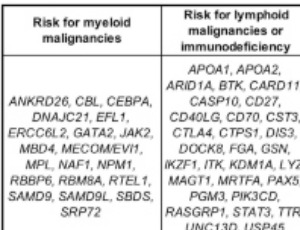
Unesbulin – a Novel Anti-tubulin Cancer Therapeutic
Lan Gao, Marla Weetall, Kylie O’Keefe, Elizabeth Goodwin, Ronald Kong
A hallmark of all cancers is the rapid rates of cell division associated with tumor growth. Rapid cell division is dependent upon the assembly and disassembly of microtubules, which are essential components of the mitotic spindle and are critical for the movement and separation of chromosomes during cell division. Microtubules are dynamic filaments that are composed of αβ-tubulin heterodimers. Microtubules also play key roles in determining cell shape, cell motility, and transportation of organelles within the cell. Blocking normal microtubular function leads to a failure of cells to progress through cell division and ultimately results in cell death.
J Clin Haematol, 2021, Volume Volume 2, Issue Issue 3, p80-85 | DOI: 10.33696/haematology.2.032
Nanoscale Chitosan-Based Hemostasis Membrane
Santosh S. Biranje, Pallavi V. Madiwale, Ravindra V. Adivarekar
Excessive bleeding or hemorrhage in traumatic injuries is the leading preventable cause of death in the combat and civilian trauma centers. Nearly 50% of military deaths, 90% of military battlefield casualties, and 33-56% mortalities in civilian’s surgical bleeding are associated with severe bleeding and can be prevented. Hence, significant and rapid hemostasis or bleeding control require innovative strategies with easy to use, stable, and inexpensive processing. Furthermore, the developed hemostatic material should ensure biocompatibility and biodegradability with non-immunogenic properties. To date, a wide variety of hemostatic powders, dressings, and bandages have been investigated as useful materials in reducing hemorrhage.
J Clin Haematol, 2020, Volume Volume 1, Issue Issue 3, p85-89 | DOI: 10.33696/haematology.1.013
Moving the Treatment of Acute Myeloid Leukemia to the Outpatient Setting: Current Expert Perspectives and Consensus Findings
Chetasi Talati, Kendra L. Sweet, Daniel A. Pollyea, Sandra E. Kurtin, Jeff Klaus, Jennifer Eatrides, Harry P. Erba
In patients with newly diagnosed acute myeloid leukemia (AML), the initial treatment decision is often predicated on the individual’s candidacy for intensive chemotherapy. For those patients considered eligible for intensive treatment, the standard approach historically has been induction with a combination chemotherapy regimen such as cytarabine for 7 days and an anthracycline for 3 days (“7+3” therapy). Those patients who achieve remission will typically go on to receive consolidation chemotherapy and/or allogeneic hematopoietic cell transplantation (HCT).
J Clin Haematol, 2021, Volume Volume 2, Issue Issue 3, p86-94 | DOI: 10.33696/haematology.2.033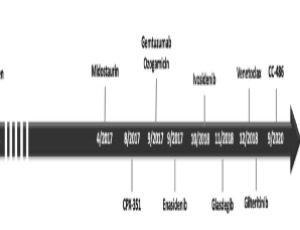
Second Generation Platelet Concentrates - L-PRF (Fibrin Rich in Platelets and Leukocytes) and Its Derivatives (A-PRF, I-PRF)-: Morphological Characteristics to be Used in Modern Regenerative Surgery. Experimental Research
Alessandro Crisci, Carlo Alberto Minniti , Antonella Conte, Michela Crisci, Federica Cardillo
Platelet preparations (PDPs) have gained success, mainly due to their high concentrations of biologically active molecules, such as growth factors and cytokines, which play an important role in tissue repair and reconstruction. Recent knowledge shows that platelets can play a new role in tissue reproduction and vascular restoration, as well as being the protagonists of inflammatory processes and immune system responses. They release bio-active proteins and other active ingredients that can affect a number of phenomena that promote cell consumption, growth and transformation (growth factors).
J Clin Haematol, 2020, Volume Volume 1, Issue Issue 3, p90-102 | DOI: 10.33696/haematology.1.014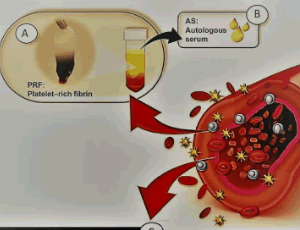
Atezolizumab Monotherapy as First-line Treatment in Patients with Advanced BRAFV600 Wild-type Melanoma
Juliano C. Coelho, Taiane F. Rebelatto, Rodrigo R. Pereira, Pedro E. R. Liedke, Andrea B. Zanon, Sergio J. Azevedo
According to the GLOBOCAN, approximately 324,635 new cases and 57,043 deaths due to melanoma were estimated worldwide for 2020. In parallel to this, there has been a significant improvement over the last decade in treatment options for advanced melanoma, such as molecularly targeted therapies and immune-checkpoint inhibitors. These treatments have had a positive impact on mortality rates. The main role of molecularly targeted therapies is to treat those with BRAF V600-mutated melanoma, while immune-checkpoint inhibitors - Programmed cell death 1 protein (PD-1), Programmed cell death-ligand 1 (PD-L1), and antibody directed against cytotoxic T lymphocyte-associated antigen 4 (CTLA-4) - play an important role in both BRAF V600-mutated and BRAFV600 wild-type (WT) melanoma.
J Clin Haematol, 2021, Volume Volume 2, Issue Issue 3, p95-97 | DOI: 10.33696/haematology.2.034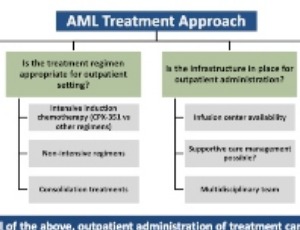
Preventing Stroke in Sickle Cell Disease: 2021. The Role of Transcranial Doppler Ultrasound (TCD) When the Use of Transfusion is Problematic
Robert J Adams
While TCD is an indicator of risk, not a biopsy diagnosis (such as proof of cancer), at some point in the velocity spectrum the high velocity detected by TCD reaches what many believe is an unacceptable risk of stroke.
J Clin Haematol, 2021, Volume Volume 2, Issue Issue 3, p98-100 | DOI: 10.33696/haematology.2.035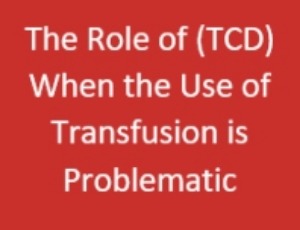
Advances in the Treatment of Vitamin B12 Deficiency—from Classical Replacement to Precision Supplementation
Emmanuel Andres
Vitamin B12 deficiency remains a common and clinically significant condition, affecting hematologic, neurologic, and systemic health. Despite being preventable and easily treatable, its management continues to evolve as understanding of metabolism, absorption, and individualized therapy improves . The principal therapeutic goal is to restore adequate vitamin B12 levels to reverse anemia, prevent neurological complications, and maintain metabolic balance. Modern strategies now integrate precision supplementation, focusing on bioavailability, patient compliance, and mechanistic understanding.
J Clin Haematol, Volume 6, Issue 1, p101-103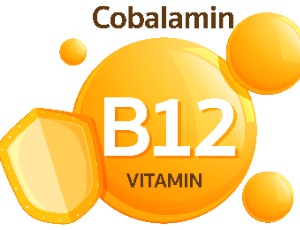
Evolutionary Changes of the Cardiovascular System Initiated by Reduced Atmospheric O2 Gave Rise to Mammalian and Avian Endothermy
Gerald Soslau
This commentary will address the salient points explored in a previous publication on the role of the red blood cell and platelet in the evolution of mammalian and avian endothermy, include additional concepts associated with the evolution of endothermy, and finally address future directions that may be followed in this area of research. The most simplistic definition of the terms endothermic and ectothermic is the former refers to warmblooded animals that maintain their body temperature by endogenous mechanisms while the latter refers to coldblooded animals that require external sources of heat to warm their bodies. In actuality the ability to maintain body heat is more complex for many animals categorized by these terms since some large-bodied ectotherms can maintain body temperatures by internal mechanisms and some endotherms do not maintain body temperature at selective times, such as when hibernating.
J Clin Haematol, 2021, Volume Volume 2, Issue Issue 3, p101-105 | DOI: 10.33696/haematology.2.036
Citius, Altius, Fortius: Performance in a Bottle for CAR T-Cells
Asma Ayari, Roddy S. O’Connor
The renewed interest in understanding how activated T cells alter their metabolism to support their growth and differentiation has led to several innovative advances in synthetic biology; culminating in a number of genetic and pharmacologic approaches aimed at improving the antitumor function of adoptively transferred T cells. Indeed, the growing field of immunometabolism has accelerated rapidly giving rise to exciting discoveries and exploratory studies revealing how T cells balance metabolic adaptations in response to intrinsic and extrinsic regulatory cues. Central to this body of work, we showed how chimeric antigen receptors (CAR)-induced metabolic reprogramming is an important determinant of efficacy and clinical outcome in blood-based malignancies.
J Clin Haematol, 2020, Volume Volume 1, Issue Issue 3, p103-106 | DOI: 10.33696/haematology.1.015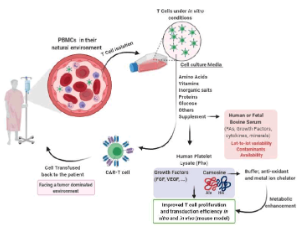
Acute Myeloid Leukaemia with inv (16) in a 2-year-old Boy: A Diagnostic Dilemma
Haider Ali Malakzai, Abdul Latif Khairy, Sayed Ali Hashimi, Ramin Saadaat, Mujtaba Haidari, Jamshid Abdul-Ghafar, Abdul Jamil Rasooli, Sarah Noor, Sahar Noor, Maryam Ahmad, Ahmad Shekib Zahier, Samuel Sharif, Abdul Sami Ibrahimkhil, Esmatullah Esmat,
2-Year-Old boy with normal birth and developmental history, presented to pediatrician for rapidly progressive swelling in the neck, abdomen and eye. The patient initially was noted to have lymphadenopathy in the cervical region with monocytosis on blood counts. Accordingly, the patient was prescribed antibiotics and was asked to re-visit after one week. During the visit after a week lymphadenopathy was noted to increase on the second visit, with new lymphadenopathies noted in the axillary region and swelling around the eyes. On general examination the patient was in distress due to pain with bilateral cervical, axillary lymphadenopathy, upper and lower limb ecchymosis and bilateral ocular swelling, more prominent in the right side, with patient unable to close the eyes.
J Clin Haematol, 2021, Volume Volume 2, Issue Issue 4, p106-110 | DOI: 10.33696/haematology.2.037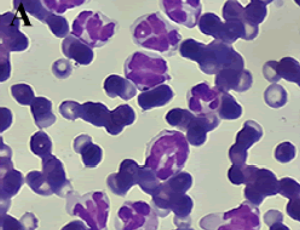
Gemcitabine in the Era of Cancer Immunotherapy
Katarzyna Piadel, Angus George Dalgleish, Peter Lawrence Smith
Gemcitabine is a synthetic pyrimidine nucleoside analogue which is administered intravenously as a chemotherapeutic to treat numerous cancers. Gemcitabine requires transport into cells and activation by phosphorylation, the resulting gemcitabine triphosphate is incorporated into newly synthesized DNA during cell division, inhibiting further DNA synthesis and causing cell death. Gemcitabine is used to treat cancers including those of the pancreas, lung, breast, colon, and ovary either as first or second line treatments as a single agent or in combination.
J Clin Haematol, 2020, Volume Volume 1, Issue Issue 4, p107-120 | DOI: 10.33696/haematology.1.016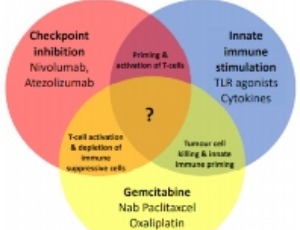
BeEAM Conditioning for Autologous Transplant in Lymphoma: A Review of the Evidence, Safety and Efficacy
Logan Hahn, Mark Bosch
The ground-breaking PARMA and CORAL trials have substantiated high dose chemotherapy (HDCT) and autologous stem cell transplantation (ASCT) as standard of care in the treatment of chemosensitive and relapsed Non-Hodgkin’s Lymphoma (NHL). Additionally, the regimen has proven effective in the treatment of relapsed and resistant Hodgkin’s Lymphoma (HL). Globally, carmustine (BCNU), etoposide, cytarabine and melphalan (BEAM) has been the most widely used conditioning regimen of the past 30 years. BEAM conditioning is generally well-tolerated and effective, with the most common toxicity being oral and gastrointestinal mucositis. Despite this, some transplant centres have transitioned from BEAM HDCT to a newer regiment referred to as BeEAM, which replaces BCNU for bendamustine. The movement appears to be primarily driven by a worldwide scarcity of BCNU, which has led to affordability issues. This dramatic rise in drug cost is not insignificant. Between 2013 and 2015, the price of BCNU increased from $200 (CAD) / 100 mg vial to $4,965.14 (CAD) / 100 mg vial.
J Clin Haematol, 2021, Volume Volume 2, Issue Issue 4, p111-114 | DOI: 10.33696/haematology.2.038
Deep Immune Status Monitoring with Multi-color Flow Cytometry
Weiwei Wang, Guang Fan, Lisong Shen
With the development of immune therapy, the role of immune monitoring during treatments has been emphasized. Flow cytometry is the best method for immune status monitoring because of its characteristic of multi-parameter analysis. To broadly monitor immune status, we established and validated a multi-color comprehensive panel of 29 antibodies to cover 90 immune cell subsets and the research work was published in the issue of ILSH recently. The article reported that the clinical applications of 10-color flow cytometry to monitor the immune status of patients before or after clinical treatments in 2 ml whole blood samples.
J Clin Haematol, 2021, Volume Volume 2, Issue Issue 4, p115-116 | DOI: 10.33696/haematology.2.039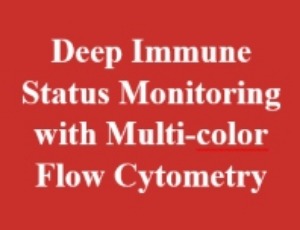
Blood Compatibility in Various Hemodialysis Membrane Materials: A Review
Akihiro C. Yamashita, Konomi Togo
In hemodialysis therapy for end-stage kidney disease (ESKD) patients, blood and dialysate are brought into contact through the dialysis membrane to remove waste products and excess water. When blood contacts the dialysis membrane, blood cells, coagulation system, fibrinolysis system, kallikrein system, and complement system are activated. Therefore, dialysis membranes with excellent blood compatibility must be chosen to avoid such reactions to occur. In this article, we review blood compatibilities of each dialysis membrane material.
J Clin Haematol, 2021, Volume Volume 2, Issue Issue 4, p117-120 | DOI: 10.33696/haematology.2.040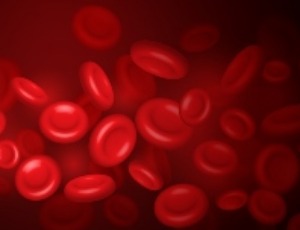
Targeted Immune Therapy as Example of Paul Ehrlich’s “Magic Bullets” Developed More than 100 Years Ago
Gerhard Zugmaier
In the article by Gerhard Zugmaier, Antibodies in hematology by the example of acute lymphoblastic leukemia, Der Internist 10 (2019) 1032–1035, the application of antibodies in hematology was described by using the example of acute lymphoblastic leukemia. Antibodies have become an essential element of treatment for patients with hematological tumors. This concept was developed more than 100 years ago in a different context. The German physician Paul Ehrlich (1854-1915) said, that for the defense against bacteria “antibodies” were be responsible. In the antibodies Ehrlich saw therapeutic compounds, that like “magic bullets” would find their target and only destroy this target without affecting the organism. Paul Ehrlich became inspired by a scene in the German opera “Der Freischütz” (“The marksman”) by the composer Carl Maria von Weber.
J Clin Haematol, 2020, Volume Volume 1, Issue Issue 4, p121-122 | DOI: 10.33696/haematology.1.017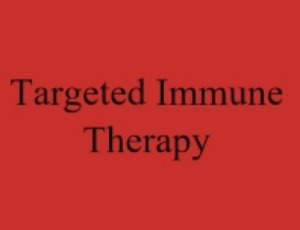
CART Cells: A New Dawn in Cancer Immunotherapy
Alessandro Busca
Over the last 10 to 15 years the treatment of patients with hematologic malignancies has seen the blossom of a large number of new agents and even new treatment strategies. Monoclonal antibodies (MoAb), TKI inhibitors, checkpoint inhibitors have been introduced in the daily clinical practice and contributed significantly to the improvement of the outcome of hematologic patients. Along with the development of these new drugs, cellular therapies, namely chimeric antigen receptor-engineered T (CART) cells, have revolutionized the therapeutic paradigm of patients with B-cell lymphoid malignancies and acute lymphoblastic leukemia (ALL).
J Clin Haematol, 2020, Volume Volume 1, Issue Issue 4, p123-124 | DOI: 10.33696/haematology.1.018
Unmasking the Master of Disguise: Defining Advancements in Diagnosis of Intravascular Large B-cell Lymphoma
Matthew Brunner, Luke Zurbriggen, Julie E. Chang
Intravascular B cell lymphoma (IVBCL) is notoriously difficult to diagnose as the clinical manifestations are protean, and the patterns seen with routine labs and imaging are non-specific. Furthermore, the disease follows an aggressive course and is often fatal within a matter of weeks to months from symptom onset, unless recognized and treated appropriately. This has historically meant that diagnosis was made at autopsy for many patients. Over the past few decades, however, scientific and clinical literature have slowly accumulated to better characterize and raise clinical awareness of this disease. In this paper, we will review the characteristics that make this diagnosis challenging, and then discuss new and emerging diagnostic avenues.
J Clin Haematol, 2020, Volume Volume 1, Issue Issue 4, p125-131 | DOI: 10.33696/haematology.1.019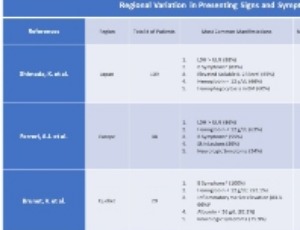
Anticancer and Antiviral Activity of the Pyridine-Biphenyl Glycoside System
Ahmed I. Khodair, Adel M. Attia, Eman A. Gendy, Yaseen A. M. M. Elshaier, Mohammed A. El-Magd
According to the report published recently by the World Health Organization, the number of cancer cases in the world will increase to 22 million by 2030. So, the anticancer drug research and development is taking place in the direction where the new entities are developed which are low in toxicity and are with improved activity. Pyridine and their pyridine-biphenyl system derivatives represent a very important class of heterocyclic compounds, which have a diverse therapeutic area. Recently, many active compounds synthesized are very effective; natural products isolated with pyridine moiety have also shown to be potent towards cancer.
J Clin Haematol, 2020, Volume Volume 1, Issue Issue 4, p132-143 | DOI: 10.33696/haematology.1.020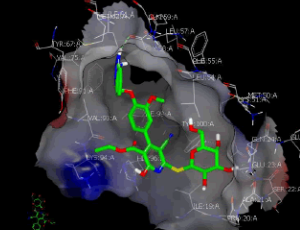
About Scientific Archives
Scientific Archives is a global publisher initiated with the mission of ensuring equal opportunity for accessing science to research community all over the world. Spreading research findings with great relevance to all channels without any barrier is our goal. We want to overcome the challenges of Open Access with ensured quality and transparency.
